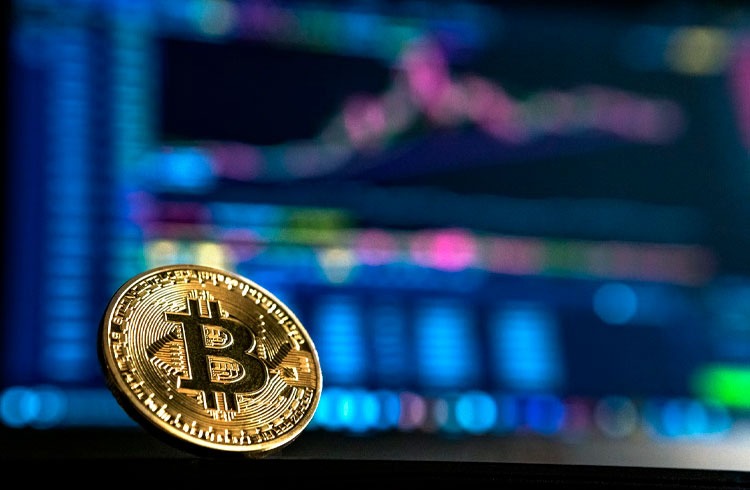Table of Contents
In a concerted action on Sunday afternoon, the largest central banks agreed on a stabilization package to ensure that the financial system does not run out of liquidity. The US Federal Reserve is now offering a daily supply of US dollar liquidity to the central banks of Canada, Great Britain, Japan, Switzerland and the euro zone. So far, the supply of US dollars has only been on a weekly basis. Within this framework, central banks can exchange their domestic currency for US dollars. This is to ensure that financial institutions can quickly obtain fresh liquidity to meet their liabilities.
Banking Crisis: It’s Only Just Begun
In the current situation, the aim is to ensure that there are no concerns among financial participants that there could be liquidity bottlenecks. The uncertainty in the banking world is so great that there are fears of domino effects. Especially since the problems surrounding the Credit Suisse earthquake are not yet over.
The fact that the Credit Suisse bond holders are not to be compensated despite the UBS takeover has caused confidence in bank bonds to collapse worldwide. The reaction to Sunday’s decision is evident this Monday morning with the opening of the Asian markets. The courses of many bank bonds have collapsed in the last few hours.
The sale of bank stocks and bank bonds is therefore expected to continue this week. Or to put it another way: the market participants are withdrawing their trust from the banks. As a result, further bank settlements are not unlikely in the next few days.
Fed, ECB and Co. cancel financial crisis
Be it with the newly launched Bank Term Funding Program or the concerted action on Sunday afternoon: Everything is done to ensure that there is no wildfire. The central banks are thus signaling what ex-ECB boss Mario Draghi said about the 2012 euro crisis: “Whatever it takes”. The industrialized countries, together with their central banks, will provide as much liquidity, i.e. loans, as is necessary.
What is intended to calm the markets on the one hand shows how serious the situation is on the other. The fact that the US Federal Reserve loudly calls out to the market: “No need to panic” does not exactly lead to confidence in our financial system being strengthened.
Money supply is increasing again…
The effects of the rescue attempts can already be seen in the central bank balance sheet of the Fed read off. If this has fallen as a result of the tighter monetary policy of the last few months, i.e. liquidity has been withdrawn from the market, the opposite can now be observed.
While policy rates may remain high, other avenues are increasing the money supply in the system. The current rescue programs have already led to an expansion of the money supply. Finally, loans or refinancing options are granted that would have been unthinkable before the collapse of the Silicon Valley Bank.
… and thus also Bitcoin
Bitcoin reaction to monetary policy can be easily seen from the course. With every further bailout by the central banks and the states, this rises northward. The combination of inflation and loose monetary policy is ideal for Bitcoin, which was designed as a store of value. The Bitcoin price on Monday morning (10 a.m. CET) was over 28,300 US dollars and was up a good four percent on a 24-hour basis.
Bitcoin with trust dividend
While Bitcoin’s rise, like that of tech stocks, is largely based on the prospect of loose monetary policy, the confidence factor cannot be ignored. States and central banks are in a permanent rescue mode and are trying to compensate for the effects of interest rate increases with rescue measures. The result is less market and more government.
Especially since most countries cannot afford this high level of interest rates in the long term. There is a clear expiry date behind quantitative tightening, which is completely independent of the current banking crisis. This should become particularly clear if we abandon the currently negative real interest rate. This causes a debt relief for the states, since inflation is higher than the key interest rate. If inflation soon falls below the base rate level, this will make it more difficult to finance government debt in the long term. Given the current trend in inflation and key interest rates, this could already be the case in the summer and autumn.
More and more market players are therefore likely to flirt with (digital) tangible assets such as Bitcoin, which offer an alternative or a safeguard against the coming orgies of money printing. Banks can go bankrupt and the money in the account can disappear or be devalued. Bitcoin, on the other hand, cannot vanish into thin air. Because Bitcoin, in contrast to our bank money, is not a claim that can fail.
- CryptoQuant Analyst: Bitcoin Nowhere Near Its Peak – Buckle Up, Hodlers! - December 21, 2024
- Chainalysis: $2.2 Billion Lost to Crypto Hacks in 2024 - December 21, 2024
- Bank of Japan leaves interest rate unchanged: Impact on the macroeconomy and the crypto market - December 20, 2024



















![Top 10 Cryptocurrency Platforms for Grid Trading in [current_date format=Y] 21 Top 10 Cryptocurrency Platforms for Grid Trading](https://cryptheory.org/wp-content/uploads/2024/12/grid-trading-120x86.jpg)




